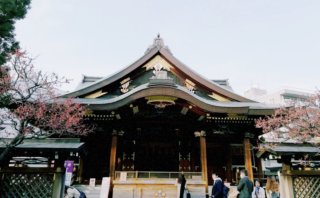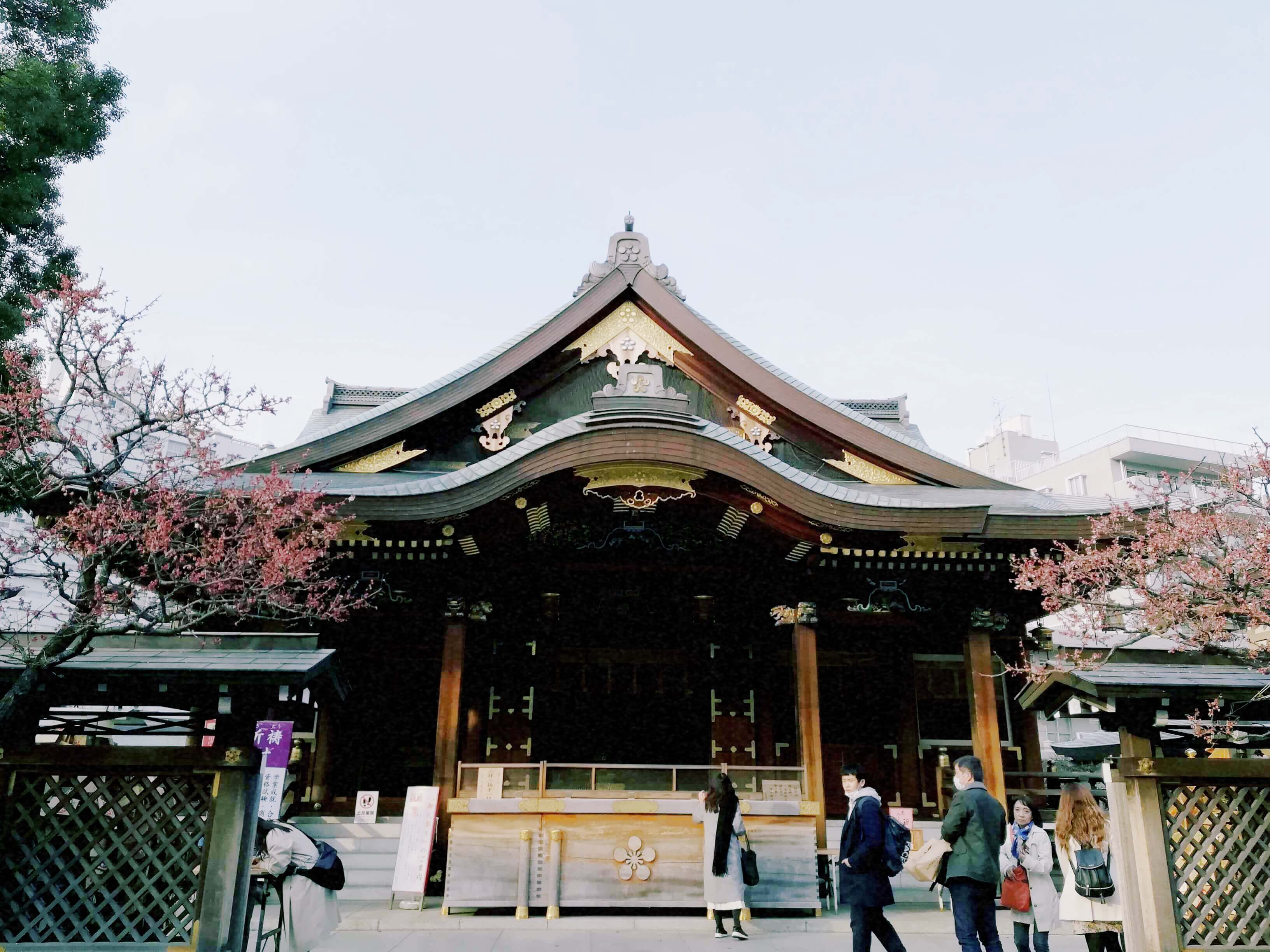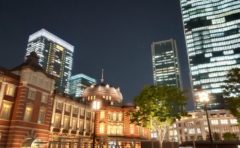Yushima Tenmangu (Yushima Tenjin), located in Yushima, Bunkyo-ku, Tokyo, is one of the three major Tenjin shrines in the Kanto region, along with Kameido Tenjinja and Taniho Tenmangu. Lord God is Michio Shinohara, known as the god of academic studies, and many applicants come to the exam every year during the exam season. Plums in the grounds are one of the most beautiful in the city.
Profit of Yushima Tenmangu
In Yushima Tenman-gu Shrine, gods such as Michizane Sugawara, a god of strength, and Amano Taiki Otoumi (seeing from Amenotata) are enshrined. In this section, let’s introduce the benefits of the shrine.
Academic achievement
Masters performers
Prayer for victory
marriage
The history of Yushima Tenmangu, popular among students
Yushima Tenman-gu Shrine is said to have been created in 451 as a shrine that enshrines Amano-tejikara-onomikoto under the command of the Emperor Yuryaku. It was in 1355 that Doshin Shinohara was joined to the shrine. It was divided by the wishes of the residents living around the shrine.
When it comes to the Edo period, Yushima Tenmangu Shrine will be worshiped by the Tokugawa family. The faith of the 5th Shogun Tokugawa Tsunayoshi was particularly strong, and many scholars and writers from the Shogun family visited for a visit, and the shrine began to flourish. In the late Edo period, a wealthy lottery like the one in the modern day is held on the grounds, and it becomes very popular among the common people.
Even in the Meiji era, the people’s faith in the shrine did not decline. The official name of the shrine changed to Yushima Tenmangu in 2001 (2001) and has reached the present.
The charm of the historical Yushima Tenmangu
Yushima Tenmangu has been popular with local people as Tenjin from Yushima since the Edo period. In this section, let us introduce the attractions and attractions of such Yushima Tenman-gu Shrine.
Plums in the grounds
Plum blossoms are planted in all places of Tenjin Shrine as a flower that is closely related to Michio Sugawara. It is said that plums in the Yushima Tenman shrine grounds are the most beautiful in the city, and have become the subject of many literatures and songs, including Izumi Kouka’s “Woman Tree”.
A plum festival is also held from the beginning of February to the beginning of March every year, so it is also recommended to visit according to that time.
Many annual events
Besides the Ume Festival, various events are held throughout the year in Yushima Tenmangu. One of the most famous is the annual festival, which takes place on May 25th. A float and a shrine pass through the town, which has become a child, and dedication dance and dumplings are also performed.
It is the chrysanthemum festival that is held every year in November. During the festival, other chrysanthemum dolls will be on display, and many locals will visit it as an opportunity to enjoy autumn in the middle of the city.
Highlights of the Yushima Tenman Shrine grounds
There are several attractions in Yushima Tenmangu. In this section, we will introduce some of the most popular places among tourists.
Copper front torii
The front torii of Yushima Tenmangu is made of copper and is the oldest casting torii in the city. Currently designated as a tangible cultural property in Tokyo.
Treasure
The treasures of Yushima Tenman-gu Shrine are stocked with treasures from Shinto shrines and other shrines used at the annual festival. In addition to the permanent exhibitions, regular exhibitions on Tenjin are also held, so if you want to know the history of the shrine in detail or if you are interested in folk literary art, it is worth a look.
Shrine
The shrine of Yushima Tenmangu is a Gongen structure in which the main shrine and the shrine in front of it are connected by a building called the Heiden. Gongen-making is often seen in temples and shrines built by the Shogunate in the Edo period, including Nikko Toshogu Shrine.
The current main shrine is a sohinoki built in 1995 (Heisei 7). The triangle part of the roof is characterized by being larger than other Gongen built buildings, and the ceiling of the dragon by the brush of Toshio Matsuo is drawn inside the hall.
Sessha / Massha in the Yushima Tenman Shrine grounds
There are several set companies and drop companies in the precincts of Yushima Tenmangu. In this section, let’s introduce the benefits etc.
Sessha Togakushi Shrine
Togakushi Shrine is a branch company of Togakushi Shrine in Nagano Prefecture. The Togakushi Shrine carries the myths of Amano Taguchi, the god of Yushima Tenman-gu, which is the god of Yume.
When Amaterasu-omikami hid in Amanoiwa-do, in the old days, Amano-tejikara-onomikoto pulled up a large rock that had blocked the entrance of Iwato, threw it out, and pulled Amaterasu-omikami out of Iwato. It is said that the shrine built in the place where the flying large rock fell is the Togakushi Shrine. A representative of the Togakushi Shrine in Kanto.
Massha Sasazuka Inari Shrine
Sasazuka Inari Shrine is an Inari company with the benefits of prosperous business, and is drawing faith from the local people. It is an impressive shrine with long red lanterns hanging by the shrine.
Other highlights
Otokozaka/Onnazaka
Otokozaka and Onnazaka are walks from Yushima Station on the Chiyoda Subway Line to Tenmangu. It is a slope from the Edo period and is also drawn on the Ukiyo-e of Utagawa Hiroshige.
Both slopes are stone steps, but Otokozaka is steeper. White plum blossoms around the slope every year around the end of February.
Nadeushi
Cows are considered angels of Tenjin (Michishin Sugawara), and a statue of a cow is often placed in the Tenjin Shrine. The Yushima Tenmangu Shrine’s cow is a rat with health benefits. It is said that if you touch the same place in your body where there is a defect, the defect will recover.
Kienhyojinseki
Kienhyojinseki is a stone that played the role of a message board during the Edo period. During the Edo period, the precincts of Shinto shrines were Edo’s most famous places. Therefore, it is said that if you have something or someone you want to look for, put a sheet of paper on the right side of the stone and the person who found them attached a sheet of paper on the left side of the stone.
Currently, it is said that there is a benefit from falling out, so it is good to visit people who have something to search for.
Plum garden
About 300 plum trees are planted in the plum garden of Yushima Tenman-gu, with a focus on white plum blossoms. Because plum blossoms are flowers that are related to Michizane Sugawara, the crest of Yushima Tenmangu is also a statue of plum blossoms. At the Ume Festival, which takes place from the beginning of February to the beginning of March every year, rare plums are also lit up.
Japanese garden
There is also a Japanese garden in the Yushima Tenmangu Shrine, and when the plum blossoms, you can enjoy the beautiful scenery. The mound in the park is a brush mound of Izumikyoka.
Yushima Tenmangu (Yushima Tenjin)Access information










